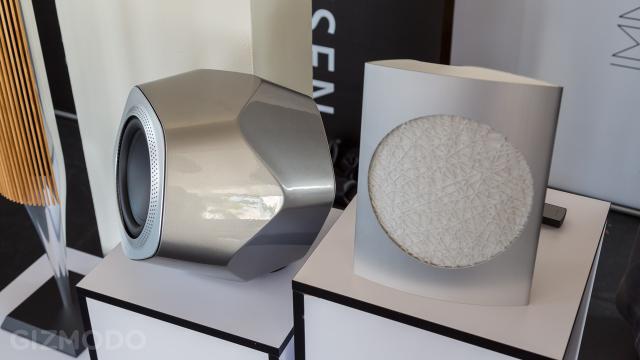Aerospace manufacturing, stiletto heels, modern architecture and more: The design inspiration for Bang & Olufsen’s three new wireless speakers — which were unveiled at an event in New York today — runs far and wide.
There’s the Beo 17, a compact, put-it-anywhere speaker, the Beo 18, a standing speaker, and Beo 19, a dodecahedron-shaped subwoofer. These three sleek devices represent B&O’s first foray into the wireless audio market, and they’re the first consumer products to boast sound quality based on a new standard put forth by WiSA, the Wireless Speaker and Audio Association.
That means the sound blasting through each device arrives uncompressed, at 24-bit and 2-5.8GHz. So how does it sound? Pretty damn good. At the launch event today, B&O execs cranked a Steely Dan track through each device at top volume (along with a Bourne Identity clip), and the sound was crisp, immersive, and tonally well-balanced — meanwhile, the bass was intense but not gritty.

Now onto design. Bang & Olfusen has seemingly embraced classic 1970s audio design over the past few years: First with their AirPlay dishes (which reference Arne Jacobsen’s speakers from 1967) and later, with their mod-tinged Playmaker series. That’s not to say these products are retro — but they take care to reference the golden age of early digital audio design. More on that later — but first, let’s take a look at the BeoLab 17.
BeoLab 17
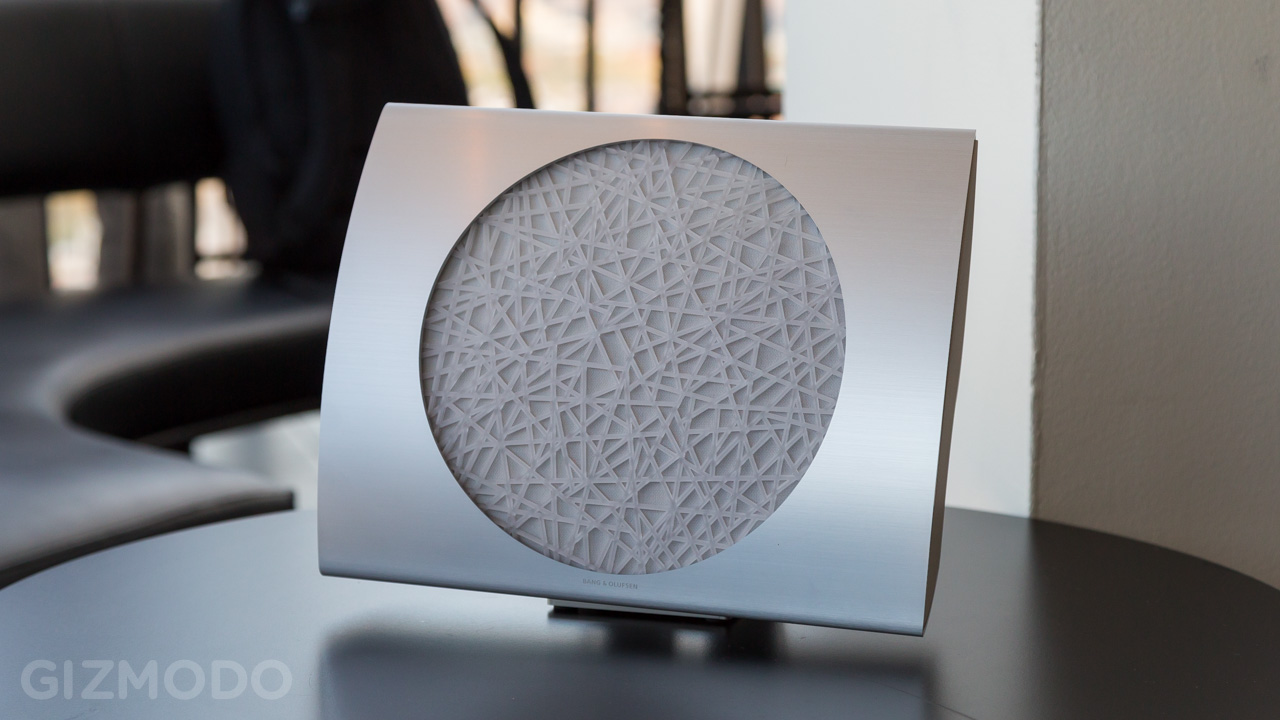
The 17 is B&O’s first high-end wireless compact loudspeaker. It’s roughly the size of a nice coffee table book, though thicker, with a curving anodised aluminium casing that’s been finely detailed to allow its four internal antennas to function properly while encased in metal.
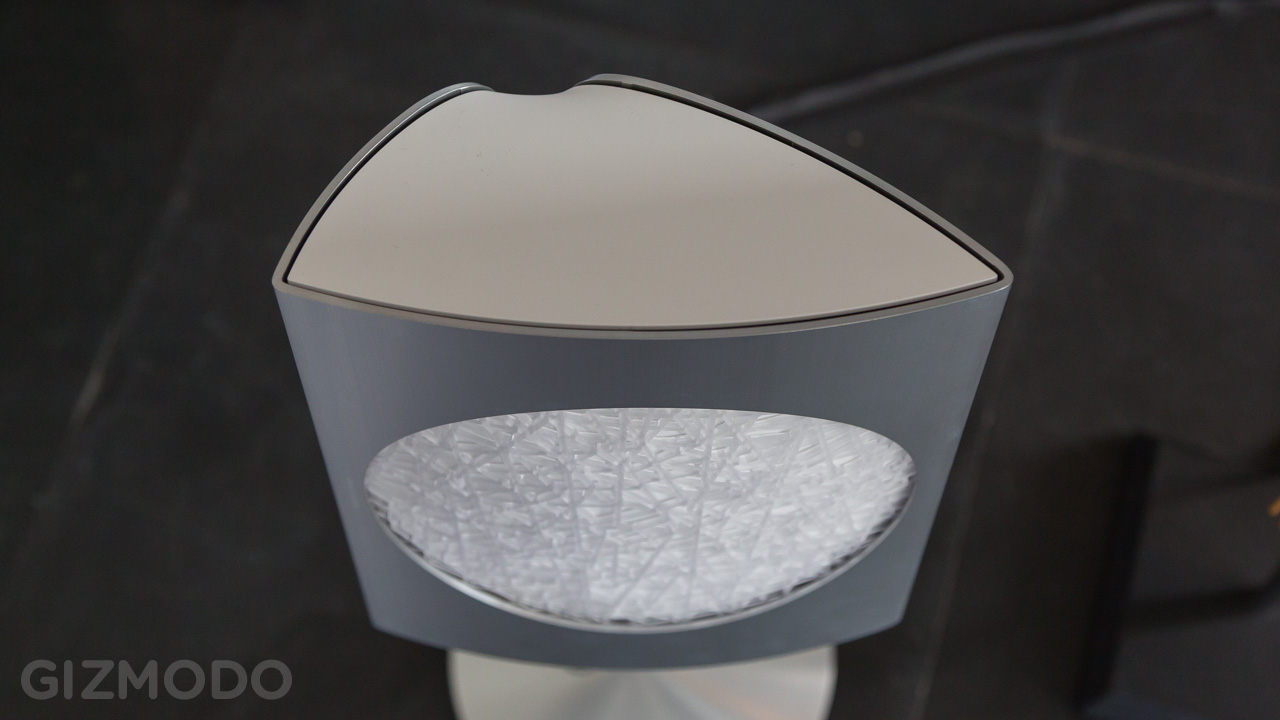
As lead B&O designer Torsten Valeur told Gizmodo after the launch event today, the design of the front panel has an unexpected source. Though it could easily be read as a reference to Herzog & de Meuron’s Bird’s Nest in Beijing, or even Zaha Hadid’s Guangzhou Opera House, as Valeur (who is a trained architect) pointed out, it’s not.
In fact, the tangled lines are actually based on a part of the speaker consumers never actually see: The structural ribbing that normally runs along the inside of the panelling. Here, it’s been turned inside out. “It’s taking a structure that’s already there, and exposing it,” he explained.
BeoLab 18
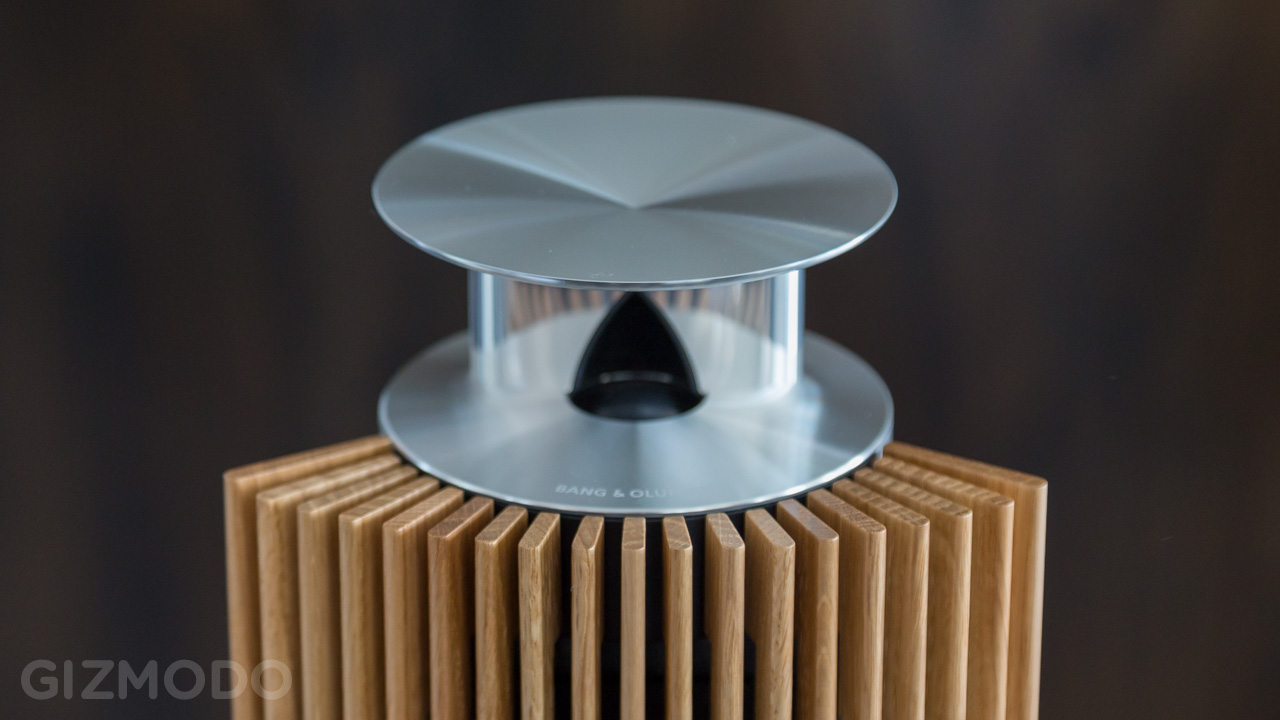
The BeoLab 18 is a direct reference to B&O’s best-selling product, the BeoLab 8000 speaker, designed by British industrial designer David Lewis in 1992.
Lewis, if you’re not familiar with him, designed many of the company’s most famous products — starting with the panelled Beomaster 3000, which launched the company in earnest in 1969. In a way, Lewis (along with B&O designer Jacob Jensen) was to B&O what Dieter Rams was to Braun: A visionary who gave the company a design voice in the emerging 1970s electronics market.
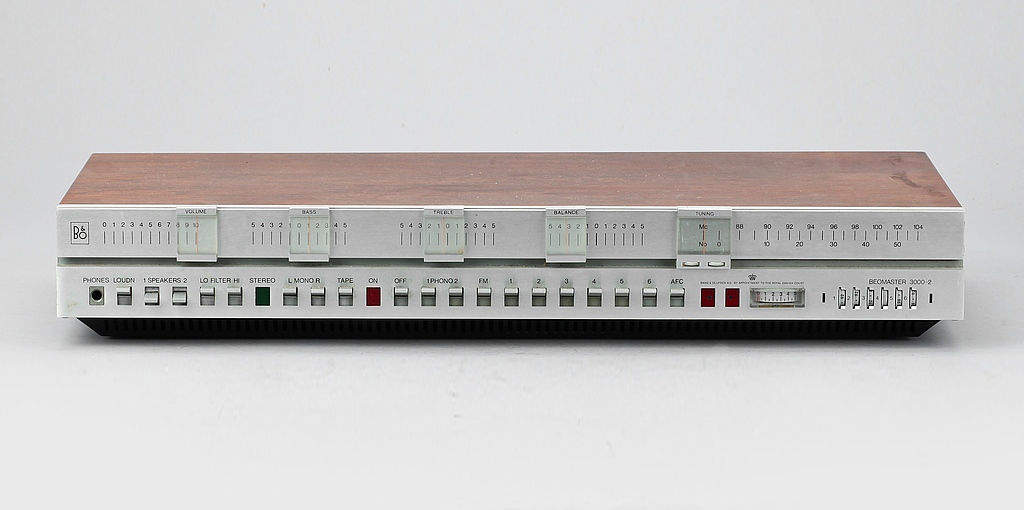
David Lewis’ BeoMaster 3000, now in MoMA’s permanent collection.
Valeur, who was also the lead designer on the revamp of Lewis’ classic device, worked for him for almost 20 years. “My first day in the office was a bit shocking,” Valeur told Gizmodo at the launch today. “I was put at a table, and he said, ‘this is your table — design a telephone!’” That device eventually became the BeoCom 2.

David Lewis’ original design for BeoLab 8000. Image by BeoPhile.
Three months after Lewis’ death, the B&O team asked Valeur to redesign Lewis’ most famous product, the BeoLab 8000. Valeur refused — it was still too soon. But as time went on, he decided to take on the project, the results of which were unveiled today at the Beo 18.
The 18 is an obvious tribute to Lewis’ work, but there are differences aplenty: The biggest, of course, being that it’s wireless, packing 24-bit uncompressed sound and two 160 watt class D amplifiers. The organic profile was inspired by a musical instrument, and the original black cover of the 8000 has been replaced by long spindles of lamella or oak — a reference, perhaps, to Lewis’ panelled work from the 1970s. The 8000’s geometric, pencil-shaped base has been transformed into a sinuous, anodised aluminium point — akin to a stiletto, according to the designers.
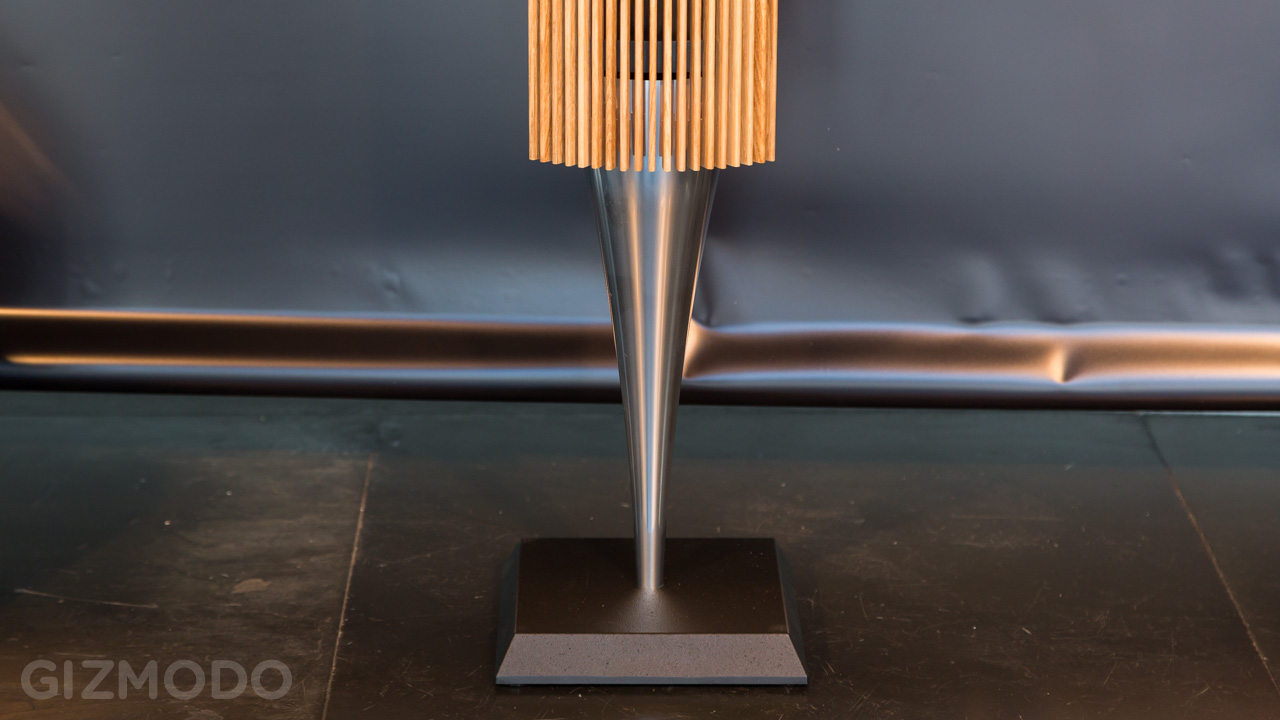
BeoLab 19

The BeoLab 19 is the subwoofer of the group, designed to function in tandem with the 17. Its dodecahedral shell is made from moulded, 2mm aluminium sheets — inspired by a process common to aeronautics design, according to designer Jakob Wagner. “I’ve always been fascinated by jet engines,” he explained in a video today. “They’re just expressions of pure performance.”
Apparently, these pentagonal plates are more than aesthetic: Along with two eight-inch drivers, they stabilise the structure of the subwoofer, which perches on a relatively small point of contact with the ground.
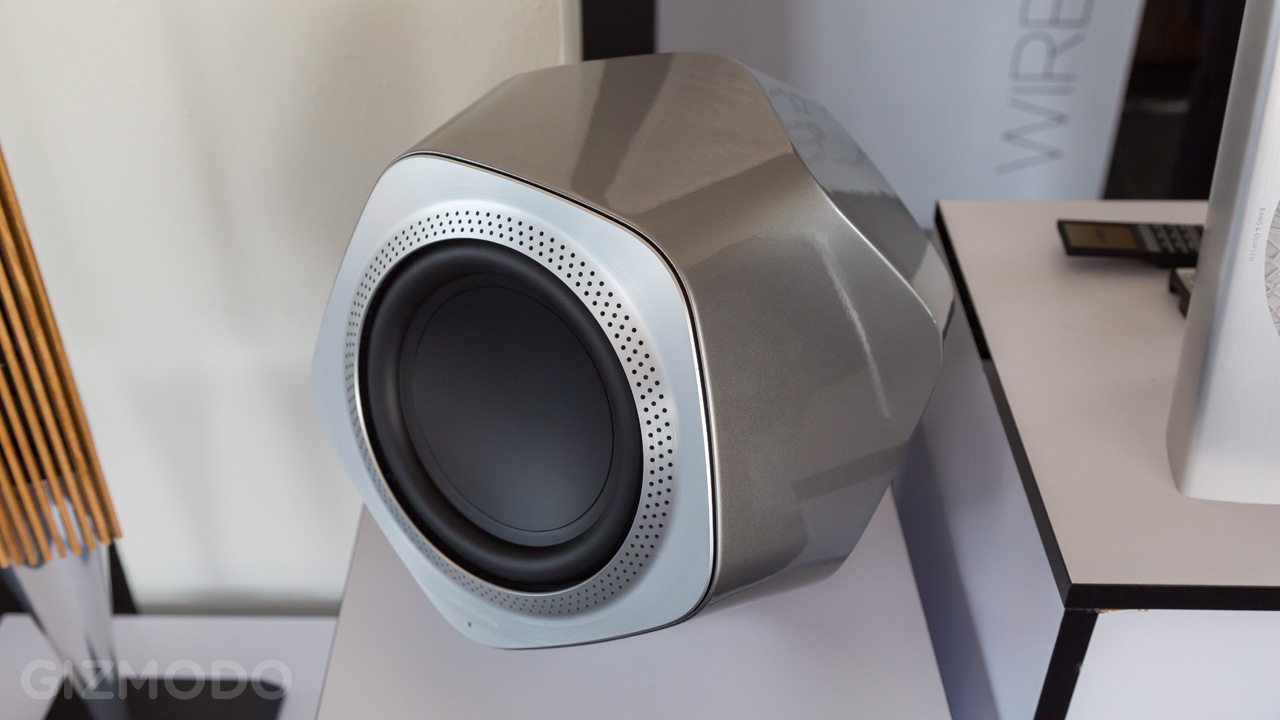
All three speakers are due to hit the market at the end of November — the Beo 17 will cost $US3990, the 18 will be $US6590, and the 19 will cost $US3395.
Pictures: Michael Hession
